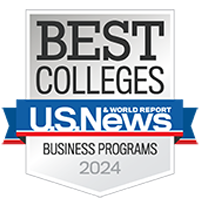Hear her roar: SBA alumna Kim Brink is driving NASCAR's image overhaul
EDITOR’S NOTE: This article originally ran in the summer 2014 issue of Wayne State magazine. Last month, Brink (B.S. ‘88 M.B.A. ’89) received a Women of Wayne Headliner Award.
There’s danger in Daytona, trouble in Talladega. A recent Time magazine article on NASCAR noted that ESPN, the gold standard of American sports TV, and Turner Broadcasting, its on-air partner for 30 years, both declined to bid on renewing contracts to televise its races.
 The economic recession hit the sport hard, primarily due to its time-honored fan base. "In many ways," the article suggests, "NASCAR finds itself becoming a sports analogue of the Republican Party: solidly popular in red states but with a declining base that skews old, white, Southern — and in NASCAR’s case, down-market."
The economic recession hit the sport hard, primarily due to its time-honored fan base. "In many ways," the article suggests, "NASCAR finds itself becoming a sports analogue of the Republican Party: solidly popular in red states but with a declining base that skews old, white, Southern — and in NASCAR’s case, down-market."
The National Association for Stock Car Auto Racing stands in need of a major overhaul to accelerate its image and promotional thrusts. Who’s going to drive that uphill challenge? Well, the woman who married the Led Zeppelin song “Rock and Roll” with Cadillac and helped resurrect the brand for General Motors seems like a winning choice.
Kim Brink, who earned both her undergraduate and master’s degrees at Wayne State, was wooed from GM two years ago to become NASCAR’S vice president of marketing. "I never thought I’d leave GM, honestly," says Brink, who also worked in advertising and sales promotion for Chevrolet arid Chevy Trucks during her 12 years with the automaker. "But I had done the Cadillac repositioning, and I love a great challenge. This opportunity came available and it was just perfect."
Steeped in sports marketing through Chevrolet’s baseball and racing commitments, Brink’s skill set was so coveted that NASCAR permits her to telecommute from Northville, Mich., her childhood home, rather than uproot her husband and two children to its Charlotte headquarters. "I grew up here," says Brink, Bus. ’88, M.B.A. ’89. “We had horses, we had a barn. It was like farmland then."
Brink explains it was "almost like a rational decision" to attend Wayne State since both her parents were alumni and she earned a full-ride academic scholarship. Even as a graduate student, however, learning in the shadow of the General Motors Building, a career involving cars was not on her life’s agenda.
"I went into the marketing department because I was more interested in consumer behavior, the psychology behind it," Brink explains. "I was a teaching assistant and a research assistant, so I got to know the professors pretty well. You felt like they took a real personal interest in your success."
"I spent most of my time with Dr. [Hugh] Cannon. [The department] was doing research for General Motors at the time and they got me in for an interview. I got the job offer and thank God I did because GM put on a hiring freeze a month later. They didn’t hire people for years."
Ironically, the Cadillac marketing master stroke that helped catapult Brink’s career was born of desperation. Her team had decided upon The Doors’ 1967 hit “Break on Through (to the Other Side)” for its breakthrough car campaign arid was set to launch during the Super Bowl.
"But Ed Begley Jr., the actor, did us in,” Brinks recalls. Begley, a noted environmentalist, apparently had the ear of the band’s estate. "He said, ‘You make the Escalade? It’s not environmentally friendly,’ and he pulled the plug!" she says. "We’re like, ‘My God, what do we do now?’ We took a CD player and sat in a conference room for hours listening to music before we landed on Led Zeppelin. People ask, ‘How did you come up with that?’ We really didn’t have a choice."
At NASCAR, Brink now faces many of the same challenges she encountered with Cadillac. "One thing we say at NASCAR we used to say at Cadillac is, ‘You’ve got to get some swagger back in the brand, be proud of who you are," she says. "One example: We didn’t ever show crashes in any of our promotional materials. That’d be like the NFL not showing hits! [NASCAR] said, ‘We stay away from that’. Why? People go to see the battles and the storylines play out between the drivers. We said, ‘OK, we’ve got to change our mind set.’"
Under Brink’s watch, NASCAR hired a national advertising agency, Ogilvy and Mather — they were the only major U.S. sport using a small regional firm — and began running a series of “image” ads celebrating the excitement of racing. Though the majority of its fans openly dislike the sport’s most dominant star, six-time Sprint Cup Series champion Jimmie Johnson, Brink chooses to accentuate the positive.
"We’re trying to get younger and diversify, because we’re still second to the NFL in almost every metric," she explains. ‘We have 100,000 people at a race on any given weekend. It’s the No. 1 spectator sport in the U.S. and our partners have huge [NASCAR] budgets. We were so successful for so long, all we had to do was race and sell sponsorships. Now we’ve got to market, to reach new audiences white reenergizing our current fan base.
"We have Danica Patrick, and I can’t think of any other sport where a female competes on the same level as men. She’s helped the sport a lot, though it would be nice if she started winning. We have an Asian driver, Kyle Larson, who’s doing well an; African-American, Darrell Wallace, Jr., who won the Truck Series race at Martinsville last year, and quite a few Hispanic drivers. If you are a big national sport, you should look like the nation, so we shouldn’t have all white people from the South. That’s a no-brainer."
Away from the track, Brink and. her husband, J. D., is attempting to address another obvious concern. They founded a nonprofit organization called The Proper Possible Movement that’s aim is to increase polite behavior, particularly among youth, with a tagline of "Leave It Better Than You Found It." "When I was in high school, it was the norm to be nice," she says. "Now you’re the bad guy if you’re nice. It’s important that kids hear about this from other kids. We’ve got a lot to do."



